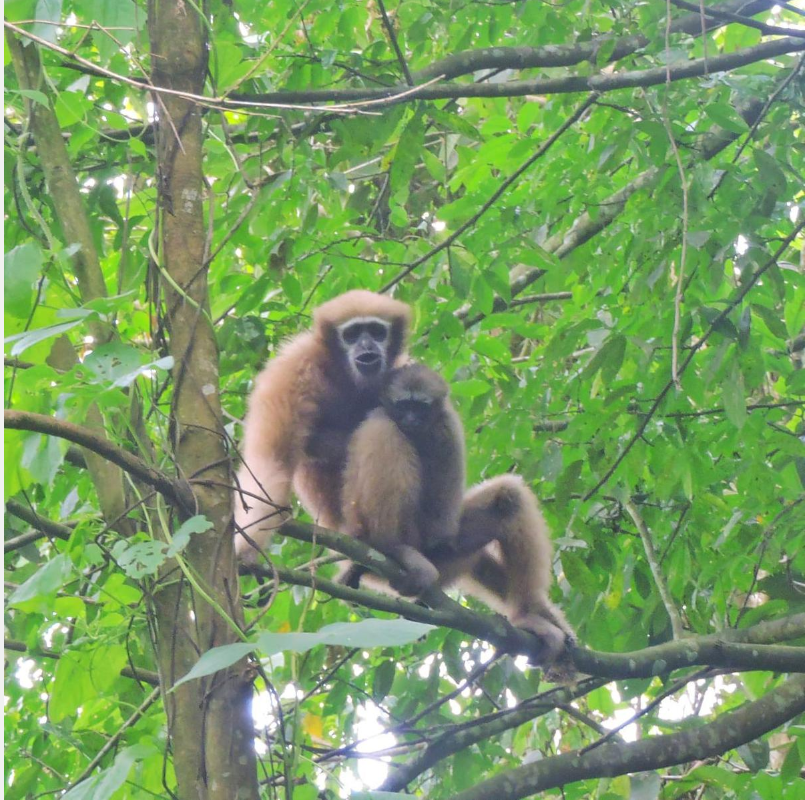Description

Disclaimer: Copyright infringement not intended.
Context
- In an event organized in China recently, the cause of conservation of the Hoolock gibbon was raised and discussed.
- The meeting was organized from 7th to 9th of July at Haikou, Hainan province of China, by Global Gibbon Network (GGN).
- In earlier studies, scientists believed that there were two ape species in India
- Western hoolock gibbon and
- Eastern hoolock gibbon
- However now it is considered India’s only ape in a study by Hyderabad-based Centre for Cellular and Molecular Biology.

Hoolock Gibbon
- This species belong to the family of Hylobatidae.
- This species of ape is one of the 20 species of gibbons found on this planet.
- These are characterised by their vigorous vocal displays.
- The total population of this species is estimated to be around 12000.
- It is the smallest and the fastest species of apes.
- They display a high level of intelligence and strong family bonds.
Distribution and Habitat
- Tropical, evergreen and semi-evergreen forests and subtropical moist deciduous forests
- it is native to Tropical and Subtropical forests in the south eastern part of Asia
- Found in Bangladesh, Northeast India, some parts of Myanmar and Southwest China.
- India – unique to Northeast reasons between the south of the Brahmaputra River and east of the Dibang River.
Threats
- Cutting down of trees for the purpose of various infrastructure projects.
- Other habitat destruction of various forms.
- Hunted for meat.
- Human encroachments.
Conservation Efforts to be taken
- More dedicated Gibbon Wildlife Sanctuary on the lines of the Government of Assam
- In 1997 upgraded the status of the Hoollongapar Reserve Forest in the Jorhat District of Assam to a Gibbon Wildlife Sanctuary.
- Legal protection to be provided.
- Only key and strategic infrastructure works to be taken in their habit.
- Limit human encroachment and poaching
Conservation Status
- After 1990 there is a significant decline in the gibbon population.
- A high risk of extinction hovers over all 20 species of gibbons.
- Only a small population of few thousands is surviving in tropical rainforests.
- IUCN red list maintains the status of the previous categorization
- Eastern hoolock gibbon – Vulnerable
- Western hoolock gibbon – Endangered
- Both western and eastern hoolock gibbons are included in Schedule 1 of the Indian (Wildlife) Protection Act 1972.
|
Global Gibbon Network (GGN)
- GGN was founded in Haikou, south China's Hainan Province in 2022.
- It has aim to safeguard and conserve a key element of Asia’s unique natural heritage — the singing gibbon and their habitats.
- It has a vision to promote participatory conservation policies, legislations, and actions for the protection of gibbons.
|

|
PRACTICE QUESTION
Consider the following statements about Hoolock gibbon:
1. The species is included in the schedule 1 of the Indian (Wildlife) Protection Act 1972.
2. Out of the 20 species of gibbons found on earth, It is the only ape species found in India.
Which of the statements given above is/are correct?
A. 1 only
B. 2 only
C. Both 1 and 2
D. Neither 1 nor 2
Answer: (C)
|
https://epaper.thehindu.com/ccidist-ws/th/th_delhi/issues/43910/OPS/G11BG9OG0.1.png?cropFromPage=true












